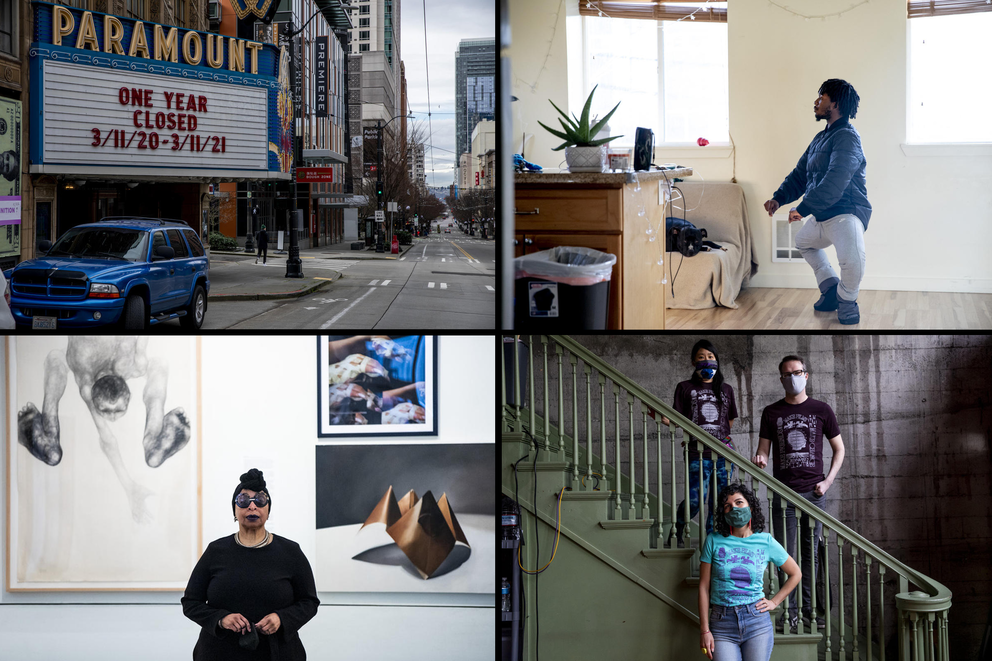A year into the pandemic closures, our arts & culture team wanted to figure out how the local creative scene was doing — financially, artistically and mentally. Obviously, we knew things were bad: 2020 was a disastrous year for most of us. But how do you measure devastation?
We decided to try with a survey, which we sent out to Puget Sound-area cultural organizations, asking them, in essence: How are you holding up? Like, really. We hoped some regionwide data and anecdotes would shed more light on the particular challenges, silver linings and expectations of different types of groups, from scrappy, volunteer-run theaters to major museums.
The first time I skimmed through the 100-plus responses to our 20 multiple-choice and open-ended questions, one word caught my eye: morale. After browsing more responses, I toggled Ctrl+F in my giant Excel sheet of responses and searched for “morale,” “anxiety” and “mental health.” Answer after answer lit up.
Of course, covering rent and paychecks proved a major challenge for most organizations, but once I peeled back this layer, it became clear many grappled most with the uncertainty in an industry already so notoriously precarious.
“Will our stakeholders stick with us the longer we remain closed?” one small museum wrote. “And will our tiny staff recover from fear of illness, home schooling, spousal unemployment and relationship break-up? We're anxious about 2021.”
In subsequent interviews, I talked with an executive director who would soon have to lay herself off. Another director also agonized over a colleague’s cancer diagnosis. A theater artist and MFA graduate who moved back in with his parents reported feeling low and fearful that he and his colleagues would leave the industry forever.
As he noted: This year merely highlighted “the fragility of this chosen life path.” One that’s somehow still buttressed by the unspoken belief that because you’re in the arts, working 12-hour days, six days a week, is par for the course; that the historic underfunding of small organizations and Black, Indigenous artists and artists of color “should be expected.”
Many feel the pandemic is a wake-up call for the public and those in power.
The arts and culture industry was inequitable and struggling long before COVID-19, and no one wants to go back to that. As Royal Alley-Barnes, executive director of longtime Pioneer square gallery Center on Contemporary Art, put it, “Normal was horrific for so many artists.”
“The pandemic has highlighted just how vulnerable arts organizations and individual artists are in an economic system that values product over people (something most of us working in the arts have understood for a very long time),” Christopher Comte, longtime theater professional, wrote in a Facebook comment on the article.
Thanks to the many people who shared their fears, challenges and hopes with me, I felt I understood this better than ever before — and I hope the same goes for everyone who reads the story. I believe these kinds of vulnerable, in-depth discussions happen only when you truly listen to people, and actively seek them out and say: I want to understand your story and your struggles better. Please tell me how you’re doing.
This story was first published in Crosscut's Weekly newsletter. Want to hear more from reporters like Margo Vansynghel? Sign up for the newsletter, below.
Get the best stories of the week
This weekly newsletter dives deeper into one story and how it was reported, along with curating the best stories of the week.



